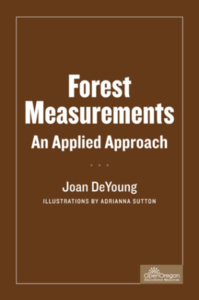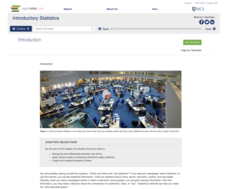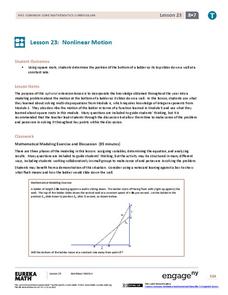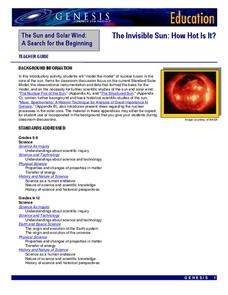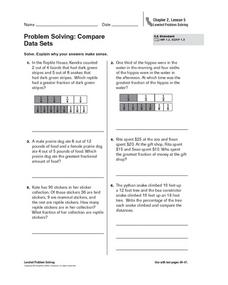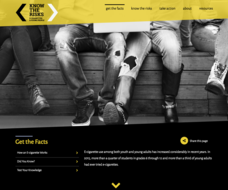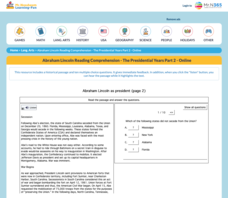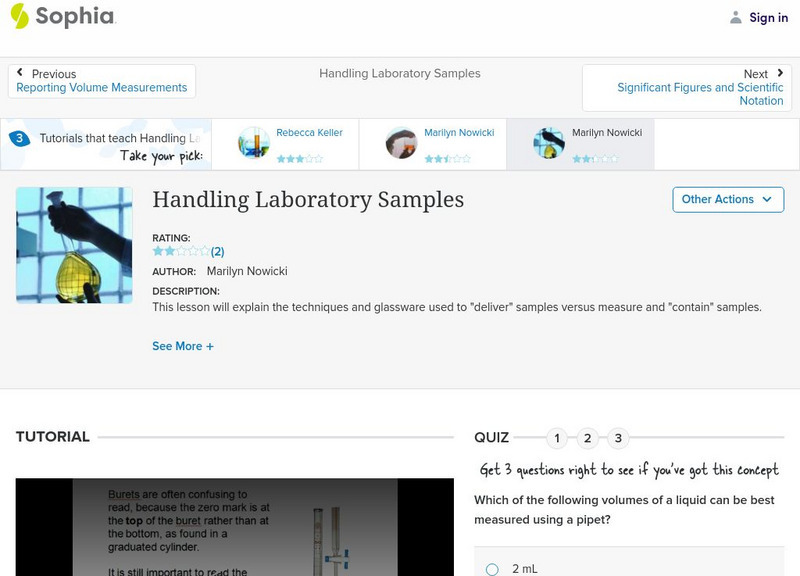Curated OER
Collecting Data
In this algebra instructional activity, students collect and analyze data. They graph and identify their solutions. There is one question with an answer key.
Open Oregon Educational Resources
Forest Measurements: An Applied Approach
Geometry—it's not just for the math classroom! Learners explore the field of forestry through a mathematical lens. An instructional resource explains how forest workers collect data about trees such as height, diameter, and age...
Curated OER
Surveys and Samples
In this surveys and samples worksheet, students discover data collection techniques and write their own survey questions. Students use random sampling, convenience sampling, and systemic sampling and analyze their results.
Curated OER
ABC Data Sheet Version 2
I have filled out quite a few of these in my day! This ABC (antecedent, behavior, consequence) sheet is intended to collect comprehensible data to help determine the function of a particular behavior. This is a vital tool for assessing...
Rice University
Introductory Statistics
Statistically speaking, the content covers several grades. Featuring all of the statistics typically covered in a college-level Statistics course, the expansive content spans from sixth grade on up to high school. Material...
Curated OER
Assessment Techniques: Trials
This assessment tool can be used to determine if your Autistic or special needs pupil can identify particular objects. You will document the number and types of prompts needed for the child to complete the task. This is typically used...
Radford University
A Change in the Weather
Explore the power of mathematics through this two-week statistics unit. Pupils learn about several climate-related issues and complete surveys that communicate their perceptions. They graph both univariate and bivariate data and use...
EngageNY
Nonlinear Motion
Investigate nonlinear motion through an analysis using the Pythagorean Theorem. Pupils combine their algebraic and geometric skills in the 24th lesson of this 25-part module. Using the Pythagorean Theorem, scholars collect data on the...
NASA
The Invisible Sun: How Hot Is It?
It's getting hot in here! The first in a series of six lessons has learners model nuclear fusion with a simple lab investigation. Groups collect data and analyze results, comparing their models to the actual process along the way.
Mathematics Assessment Project
Modeling Motion: Rolling Cups
Connect the size of a rolling cup to the size of circle it makes. Pupils view videos of cups of different sizes rolling in a circle. Using the videos and additional data, they attempt to determine a relationship between cup...
NASA
MASS, MASS – Who Has the MASS? Analyzing Tiny Samples
What is it worth to you? A hands-on activity asks groups to collect weights of different combinations of coins and calculate weighted averages. They use the analysis to understand the concept of an isotope to finish the third activity in...
Curated OER
Problem Solving: Compare Data Sets
There are a variety of techniques students can use to compare fractions. In this activity on fractions, 5th graders are shown a way to create a visual comparison and asked to solve word problems. Students are encouraged to draw a diagram...
Statistics Education Web
It’s Elemental! Sampling from the Periodic Table
How random is random? Demonstrate the different random sampling methods using a hands-on activity. Pupils use various sampling techniques to choose a random sample of elements from the periodic table. They use the different samples to...
US Surgeon General
Get the Facts on E-Cigarettes
Imagine these flavors: chocolate, candy, menthol. What age group do you imagine is the target audience of an advertising campaign that features a product with these flavors? Find out the facts about vaping with a resource that provides...
EngageNY
Ruling Out Chance (part 1)
What are the chances? Teach your classes to answer this question using mathematics. The first part of a three-day instructional activity on determining significance differences in experimental data prompts learners to analyze the...
Mr. Nussbaum
Abraham Lincoln Reading Comprehension—The Presidential Years (Part 2)
How does a president save a country from itself? Readers learn how the Civil War began and how Lincoln managed it with a reading comprehension passage. They then demonstrate their understanding with multiple choice questions that...
NASA
Catch a Piece of the Sun
What does the sun mean to you? Learners have many different interests that may have connections to the sun. Whether its solar radiation, solar flares, or solar storms, there are connections to daily interests that may surprise your...
Achieve
Ground Beef
Ever wonder how a butcher creates the different types of ground beef? Young mathematicians explore the methods butchers use to create their desired ground beef quality. Given a combination of two types of meat with varying...
Orange Qube
BaM Video Delay
As a dancer or an athlete, did you ever wish you could immediately see yourself in action so that you could determine where to make improvements? Here is a video delay application that allows you to preselect a length of time that...
CK-12 Foundation
Ck 12: Collecting Data From Experiments: Experiment Techniques
[Free Registration/Login may be required to access all resource tools.] This Concept introduces students to good design for statistical studies or experiments.
Science Education Resource Center at Carleton College
Serc: Activity: Measure Your Reaction Time
This is a lab activity that allows students to collect data to practice using effective measurement. While other authors have produced similar labs, this version includes uncertainty analysis consistent with effective measurement...
Sophia Learning
Sophia: Handling Laboratory Samples: Lesson 3
This lesson will explain the techniques and glassware used to "deliver" samples versus measure and "contain" samples. It is 3 of 3 in the series titled "Handling Laboratory Samples."
Sophia Learning
Sophia: Handling Laboratory Samples: Lesson 1
This lesson will explain the techniques and glassware used to "deliver" samples versus measure and "contain" samples. It is 1 of 3 in the series titled "Handling Laboratory Samples."
Sophia Learning
Sophia: Handling Laboratory Samples: Lesson 2
This lesson will explain the techniques and glassware used to "deliver" samples versus measure and "contain" samples. It is 2 of 3 in the series titled "Handling Laboratory Samples."

